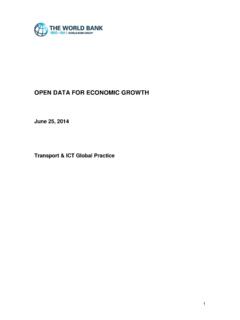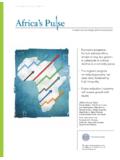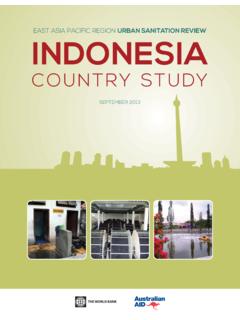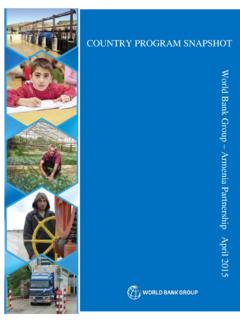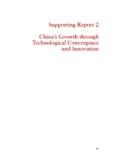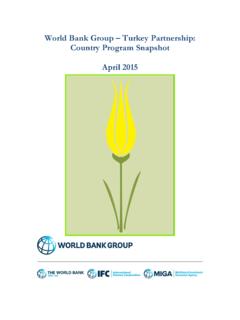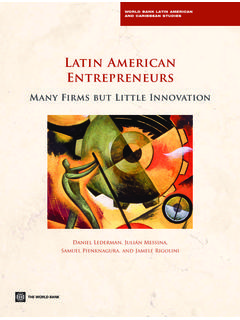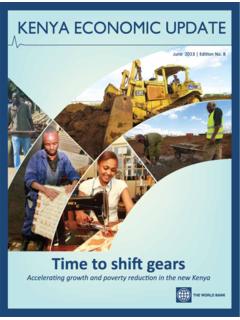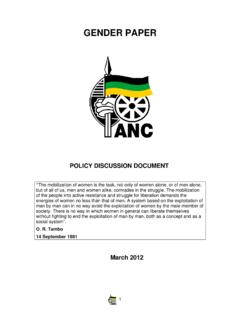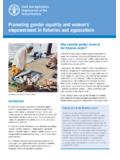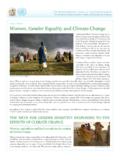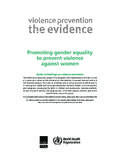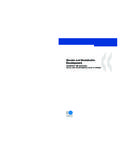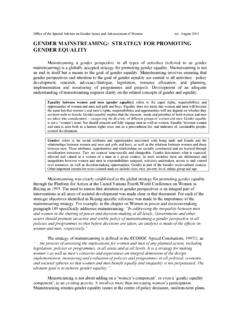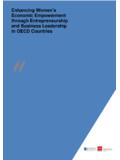Transcription of Gender at Work - World Bank
1 A Companion to the World Development Report on JobsGender at WorkIn the World of WorkCover photos from top to bottom:Construction worker checking progress and quality of dam under construction, Sri Lanka. Photographer Lakshman NadarajaWoman attends her produce post in a market, Guatemala City, Guatemala. Photographer Maria FleischmannYoung woman tending her peppers in the marketplace, Lagos, Nigeria. Photographer Women s World BankingStall owner, Thimphu weekend market, Bhutan. Photographer Michael FoleyTeacher in action, Rajasthan, India. Photographer Michael FoleyPage 1: Women repairing a road, Hanoi. Photographer Tran Thi HoaPage 5: Woman works at weaving a carpet, Herat, Afghanistan. Photographer Graham CrouchPage 17: Woman tends to plants in a nursery, Sri Lanka. Photographer Lakshman NadarajaPage 33: Woman works on her farm, Tanzania. Photographer Scott WallacePage 53: Woman cutting bamboo to weave into baskets, Vientiane, Lao PDR. Photographer Stanislas FradeliziA Companion to the World Development Report on JobsGender at WorkIn the World of WorkAcknowledgments viiForeword ixExecutive Summary 1 Gender Equality in the World of work Matters 1 Where Do We Stand?
2 1 Overlapping Disadvantages and Gender Equality at work 2 Igniting Gender Equality in the World of work 3 Notes 41. Introduction: Engendering Jobs 5 Context: Gender and the Jobs Challenge 5 Motivation: Inadequate Progress and Missed Dividends for Development 6 Report Scope, Approach, and Value Added 8 Two Paradoxes Surrounding Equality at work 10A Note on Male Disadvantage 11 Context Matters 12 Notes 132. Taking Stock: Stylized Facts About Gender at work 17 Employment Status and Quality 18 Earnings 22 Differences in Entrepreneurship and Farming 24 Labor Force Participation 25 Notes 283.
3 Overlapping Constraints Across the Lifecycle 33 Bundled Constraints: Norms, Agency, and Economic Opportunities 34 Childhood and Youth: The Start of Unequal Trajectories 38 Productive Age: Constraints at work 40 Elderly Years: The Culmination of Lifelong Disadvantage 45 Notes 464. Igniting Gender Equality in the World of work 53 Diagnostics 54 Three Levels of Action 55 Conclusions 72 Notes 72 Table of Contentsiv Gender at WorkFiGuresFigure Female labor force participation has increased dramatically in Latin America and the Caribbean 8 Figure Gender outcomes result from interactions among markets, institutions.
4 And households 9 Figure Countries range widely in the extent of Gender gaps in economic opportunities despite levels of development 10 Figure In the Middle East and North Africa, not much improvement in female labor force participation despite gains in schooling 11 Figure A multidimensional perspective to Gender equality in the World of work is needed 18 Figure Women are underrepresented in every type of employment, with greater gaps in developing countries 19 Figure Women are generally less likely to be full-time employed for an employer 20 Figure Women s employment is more likely to be part-time 20 Figure Employment status by sex and income level 22 Figure Women are underrepresented in firms top management 23 Figure Country differences exceed Gender differences in attitudes toward women s leadership ability 23 Figure Distribution of self-employed jobs in 97 developing countries 24 Figure Women are less likely than men to have formal accounts and credit 26 Figure Gender gaps in labor force participation for different age groups 27 Figure Biased norms and lack of agency across the lifecycle affect equality at work 34 Figure Main reasons given by young women in Morocco for not wanting to work , 2010 35 Figure Women face overlapping constraints (percentages of women facing constraints)
5 37 Figure Women are doubly disadvantaged by Gender and ethnicity 39 Figure Even where Gender parity is reached in higher education, segregation persists 41 Figure There is little evidence of female underperformance in subjects often dominated by men 41 Figure Gender -based time allocations have changed in industrialized countries, signaling shifting norms 42 Figure The share of elderly people is growing rapidly in developing countries 43 Figure Percentage of countries with different numbers of sex-based legal differentiations by regions, and regional averages across countries 44 BoxesBox How Gender equality in the World of work contributes to development 7 Box Regional perspectives on challenges and opportunities for Gender equality at work 12 Box To better understand Gender at work 19 Box Gender and informality: nuanced perspectives are needed 21 Box Norms favor men s economic opportunities, but can policies change them? 36 Box Fragility, Gender , and jobs 39 Box Beyond having a job: Gender and the Decent work Agenda 55 Box Navigating the many policy options for childcare services and financing 61 Box Companies can help level the playing field for women s work through corporate philanthropy 66 Box Starting from within: The World bank Group and Gender equality at work 68 Resource Box Where do countries stand?
6 Global and regional rankings on Gender equality and women s economic empowerment 28 Resource Box Data sources on deprivations and constraints 47 Resource Box Using ADePT Gender to support country diagnostics 57 Resource Box Identifying what works 65 Resource Box Resources for private sector engagement and leadership 69 Table of Contents vFigure Elderly women in India are less independent than elderly men 46 Figure Igniting equality at work : World bank Group entry points 54 Figure Both broad-based and targeted actions across the lifecycle can contribute to Gender equality in the World of work 58 Figure Implementing STEP as an integrated set of programs across workers lifecycles 59 Figure Enrollment of children in preprimary education remains very low in low-income countries 62 Figure Box Share of the population agreeing that when jobs are scarce, a man should have more of a right to a job than a woman 36 Figure Box Discriminating norms are associated with few women working 36 TaBlesTable Diagnosing constraints across the lifecycle 56 Table Indicators where urgent action is needed to close data gaps 70 This report has been the work of the World bank Group s Gender and Development unit.
7 The task was led by Matthew Morton. The report was prepared under the guidance of Jeni Klugman (Director, Gender and Development). The main con-tributors to the writing and analyses were Jeni Klugman, Lucia Hanmer, and Dorothe Singer. The team is also grateful to several other individuals including Julieth Andrea Santamaria Bonilla, Alicia Samantha Hammond, Sveinung Kiplesund, Josefina Posa-das, Emma Samman, and Sarah Twigg for important contribu-tions to specific sections and analyses. The team would also like to acknowledge Kathleen Beegle, Sarah Iqbal, Leora Klapper, and Claudio Montenegro for their co-operation; Henriette Kolb, Martin Rama, and Carolina Sanchez- Paramo for their work in conducting peer reviews; and the World bank Group Gender and Development Board members and others for useful review comments and input. Communications coordination has been led by Sarah Jackson-Han and administra-tive support has been provided by Ngozi , many more girls are going to school and living longer, healthier lives than 30 or even 10 years ago.
8 That was the good news in our flagship 2012 World Development Report on Gender . But this has not translated into broader gains. Too many women still lack basic freedoms and opportunities and face huge inequali-ties in the World of work . Globally, fewer than half of women have jobs, compared with almost four-fifths of men. Girls and women still learn less, earn less, and have far fewer assets and opportuni-ties. They farm smaller plots, work in less profitable sectors, and face discriminatory laws and norms that constrain their time and choices, as well as their ability to own or inherit property, open a bank account, or take out a loan to buy fertilizer, for example, that would boost food production for whole at work looks closely at existing constraints as well as policies and practices that show promise in closing the gaps. A companion to the 2013 World Development Report on jobs, the report advocates investing more in women s capabilities and elim-inating structural barriers such as laws that bar women from own-ing property, accessing financing, or working without permission from a male relative.
9 Public and private policies and actions can promote equality over a lifetime. This includes education and training during youth and creating opportunities for women to participate in paid work during their economically productive years. It extends to imple-menting equitable old-age labor regulations combined with ap-propriate social protection later in life. We need leadership and innovation as well as scaled-up efforts to fill critical gaps in knowl-edge and evidence, from the private sector, governments, science, and media and individuals. This agenda is urgent. Failure to act represents a huge missed opportunity. We know that reducing Gender gaps in the World of work can yield broad development dividends: improving child health and education, enhancing pov-erty reduction, and catalyzing productivity. Empowering women and girls is vital in order to achieve our twin goals: ending extreme poverty by 2030 and boosting shared pros-perity.
10 The World bank Group is fully committed to this agenda. Jim Yong KimPresident, The World bank Groupexecutive summaryGender equaliTy in The World oF work MaTTers Jobs can bring gains for women, their families, businesses, and communities. Jobs boost self-esteem and pull families out of poverty. Yet Gender disparities persist in the World of work . Closing these gaps, while working to stimulate job creation more broadly, is a prerequisite for ending extreme poverty and boosting shared equality in the World of work is a win-win on many fronts. A large and growing body of evidence demonstrates both the business and the development case. Booz & Company estimates that raising female employment to male levels could have a direct impact on GDP, increasing it by 34 percent in Egypt, 12 percent in the United Arab Emirates, 10 percent in South Africa, and 9 percent in Japan, taking into account losses in economy-wide labor productivity that could occur as new workers entered the labor Yet almost half of women s productive poten-tial globally is unutilized, compared to 22 percent of men s, according to the Inter-national Labour In places where women s paid work has increased, as in Latin America and the Caribbean, gains have made significant contributions to overall poverty the World Development Report 2013 on Jobs (WDR 2013) and the World Development Report 2012 on Gender Equality and Development (WDR 2012) provide valuable and complementary frameworks to help policy makers advance Gender equality in the World of work .
